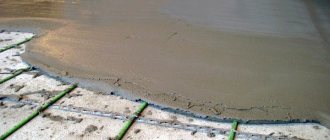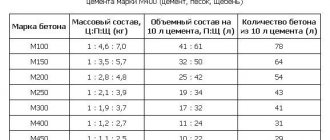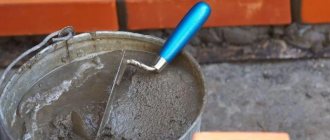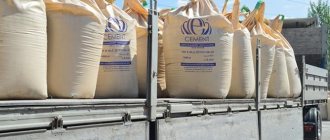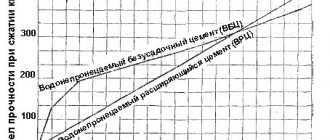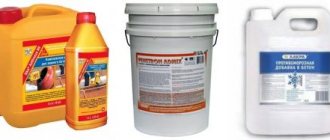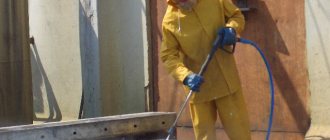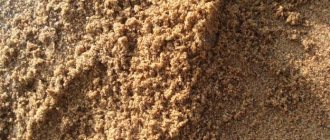Man's unbridled desire to continually “reinvent the wheel” and the irrepressible desire to surpass professional construction solutions with his own hands has recently given rise to many dangerous recommendations for independently preparing a concrete mixture using various household chemicals. For example, to increase the plasticity of concrete mortar, imaginary professionals advise using household detergents, shampoos and washing powders. Thousands of Internet pages are filled with miraculous recipes for concrete mixtures using popular detergents and household soap, the plasticity of which causes genuine delight among craftsmen when poured into formwork.
The main goal pursued by all these inventors is to save on the purchase of special plasticizer additives used in concrete plants and intended for the production of high-quality concrete. And this despite the fact that the first plasticizing additives for concrete in Russia appeared in the 30s of the previous century, and their active use began closer to the 60s. Currently, the market for professional materials for concrete and mortars is replete with additives for any purpose and purpose.
As for solutions for private construction, a significant breakthrough has come only in the last decade. A number of large companies operating in the field of production of professional construction chemicals have begun to introduce to the retail market a whole range of tailored solutions intended primarily for individual craftsmen, foremen and enthusiasts.
In order to understand the size of the savings of builders-innovators who use household chemicals as plasticizing additives, and the possible consequences of their rationalization work, it is enough to conduct one simple laboratory experiment. To do this, you will need two identical concrete mix compositions, for example, grade M400, containing equal amounts of cement, sand and crushed stone. The compositions will differ only in the amount of water required to obtain high plasticity of the mixture and the additive used.
This is exactly the experiment that Sika specialists conducted in their laboratory. In composition No. 1, superplasticizer SikaPlast 520N was used, and in composition No. 2 one of the popular detergents was used.
| Quantity | ||
| Composition No. 1 | Composition No. 2 | |
| Cement CEM I 42.5 | 3.2 kg | 3.2 kg |
| Sand | 6.88 kg | 6.88 kg |
| Crushed stone 5-20 | 8 kg | 8 kg |
| Water | 1.41 l | 1.62 l |
| Additive | 40 g (SikaPlast 520N) | 8 g (detergent) |
The consumption of additives was selected in such a way that both compositions of the concrete mixture had equally high plasticity, at which laying the solution into the formwork required minimal effort. As we can see, the consumption of the popular detergent turned out to be lower than that of the professional plasticizer. The present cost of the SikaPlast 520N additive in composition No. 1 was 11.28 rubles, and in composition No. 2 – 1.47 rubles (based on the average retail price of materials as of March 2020). At first glance, the benefits of using household chemicals are obvious.
Let's check if this is true in laboratory tests. The fact is that detergents in concrete can be compared to icebergs in the Atlantic Ocean - the main part of them, which poses a threat, is hidden from the naked eye of the average person. Let's take a look at the main characteristic of concrete - its compressive strength. After preparing our two compositions, we made 4 samples of each composition and placed them in a normal storage chamber for 28 days, because this is how long concrete gains grade strength. The results of tests on a hydraulic press, obvious to professionals, can shock an unprepared person. The average strength of concrete for 4 samples, prepared using a professional plasticizer, was 640 kN, which corresponds to the M600 concrete grade. This value greatly exceeds the standard grade of concrete M350-M400, but with the second composition things are different.
Strength indicators of concrete using the SikaPlast 520N additive (Composition No. 1):
Strength indicators of concrete using detergent (Composition No. 2):
The consequence of using the detergent was an alarming drop in the strength of concrete - only 99 kN, which does not even reach the M100 concrete grade, and the formation of a pronounced porous structure of cement stone. Such strength is not enough even for screeds in domestic premises, not to mention the foundations and floors of buildings. The results of measurements of samples prepared using detergent showed a colossal entrainment of air into the concrete mixture - 20%. In practice, in addition to a sharp drop in the strength of the foundation and its load-bearing capacity, you will get high water absorption of the structure and rapid destruction of concrete under the influence of negative temperatures in the autumn-winter period.
fairies as a plasticizer
And it is worth noting that such a collapse in strength occurred only because of 8 g of detergent, but in practice, builders rarely limit themselves when dosing such “additives”, pouring it in caps or glasses. As a result, the apparent benefit from using household detergent turned into a colossal drop in the strength of concrete and the fragility of the structure.
Kirill Lebedev. Technical specialist of the Concrete department of the Sika Corporation.
The article was prepared jointly with the portal forumhouse.ru.
Sika
I worked for a long time as a mason at various construction sites and jobs, and therefore I have first-hand knowledge of everything that concerns this difficult craft.
Let me start with the fact that construction work itself is a very labor-intensive process that requires enormous physical effort. And it doesn’t matter whether you are a plasterer, a painter or a mason. The important thing is that it is really very difficult. I still know the feeling of being so tired that I can’t even raise my arms after a long day of work, let alone anything else.
